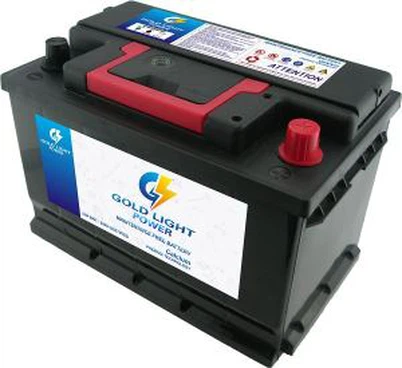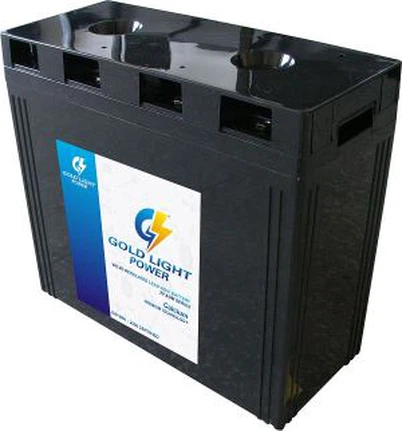How does the gas emission of a batterie agm compare to other battery types?
Leave a message
Hey there! As a supplier of AGM batteries, I often get asked about how the gas emission of an AGM battery stacks up against other battery types. So, I thought I'd take a deep dive into this topic and share my insights with you.
First off, let's quickly go over what an AGM battery is. AGM stands for Absorbent Glass Mat. In these batteries, the electrolyte is absorbed into a fine fiberglass mat, which keeps it in place and makes the battery spill - proof. This design has a lot of benefits, and gas emission is one area where it really shines.
Gas Emission Basics
When a battery is charging or discharging, chemical reactions occur inside it. These reactions can sometimes produce gases. The most common gases are hydrogen and oxygen. If too much gas builds up inside a battery, it can lead to pressure issues, and in extreme cases, even an explosion. So, understanding how different battery types emit gas is crucial for safety and performance.
AGM Batteries and Gas Emission
AGM batteries are known for their low gas emission. The design of the AGM battery, with the electrolyte held in the glass mat, allows for better recombination of the gases produced during charging. When hydrogen and oxygen are produced, they can recombine back into water inside the battery. This is called the oxygen recombination cycle.
In a well - maintained AGM battery, the amount of gas that escapes the battery is extremely low. This is a huge advantage, especially in applications where ventilation is limited. For example, in a small enclosed space like a UPS (Uninterruptible Power Supply) cabinet, a battery that emits a lot of gas can create a dangerous environment. With an AGM battery, you don't have to worry as much about gas build - up.
Comparing with Flooded Lead - Acid Batteries
Flooded lead - acid batteries are the traditional type of lead - acid batteries. They have a liquid electrolyte that can freely move around inside the battery. When these batteries are charged, they produce a significant amount of hydrogen and oxygen gases. This is because the liquid electrolyte allows for more direct access to the electrodes, and the chemical reactions are more likely to produce gases that escape.


Flooded batteries require proper ventilation to prevent the build - up of these gases. If they are not properly ventilated, the hydrogen gas can reach explosive levels. In contrast, AGM batteries can be used in areas with less ventilation due to their low gas emission.
Comparing with Gel Batteries
Gel batteries are another type of sealed lead - acid battery. They use a gel - like electrolyte instead of a liquid one. Like AGM batteries, gel batteries also have a relatively low gas emission rate. However, the gas recombination process in gel batteries is not as efficient as in AGM batteries.
Gel batteries are more sensitive to overcharging. When overcharged, they can produce more gas than normal. AGM batteries are more forgiving in this regard. They can handle a wider range of charging conditions without excessive gas emission.
Real - World Implications
The difference in gas emission has a big impact on the real - world use of these batteries. For applications where safety is a top priority, such as in marine or RV (Recreational Vehicle) use, AGM batteries are a great choice. You don't have to worry about the risk of gas explosions in a confined space on a boat or in an RV.
In industrial settings, AGM batteries can be used in areas where ventilation is difficult to set up. For example, in a data center, where space is at a premium and adding ventilation for batteries can be costly, AGM batteries can be a cost - effective and safe solution.
Our Product Range
We offer a wide range of AGM batteries for various applications. But if you're also interested in other battery types, we have some great options. Check out our 2V200AH OPzV Battery, GEL Tubular Plate Battery UPS EPS 5years Warranty and 2V300AH OPzV Battery Deep Cycle Solar Power Battery Valve Regulated Lead Aicd Battery 20 Years Life. These batteries are also designed with performance and safety in mind.
Conclusion
In conclusion, AGM batteries have a significant advantage when it comes to gas emission compared to other battery types. Their low gas emission makes them safer, more convenient, and suitable for a wider range of applications. Whether you're looking for a battery for your home UPS, your boat, or an industrial application, AGM batteries are definitely worth considering.
If you're interested in learning more about our AGM batteries or have any questions about gas emission and battery performance, feel free to reach out. We're always here to help you find the right battery solution for your needs. Let's start a conversation and see how we can work together to meet your battery requirements.
References
- Linden, D., & Reddy, T. B. (2002). Handbook of Batteries. McGraw - Hill.
- Bode, H. (1977). Lead - Acid Batteries. Wiley - Interscience.





